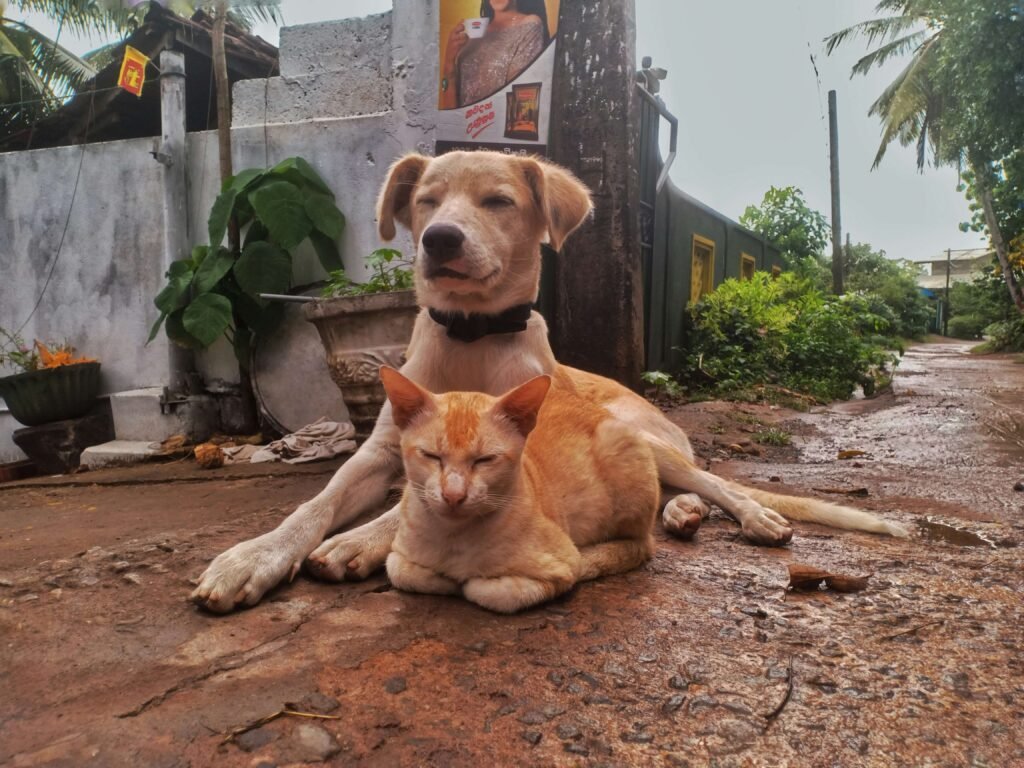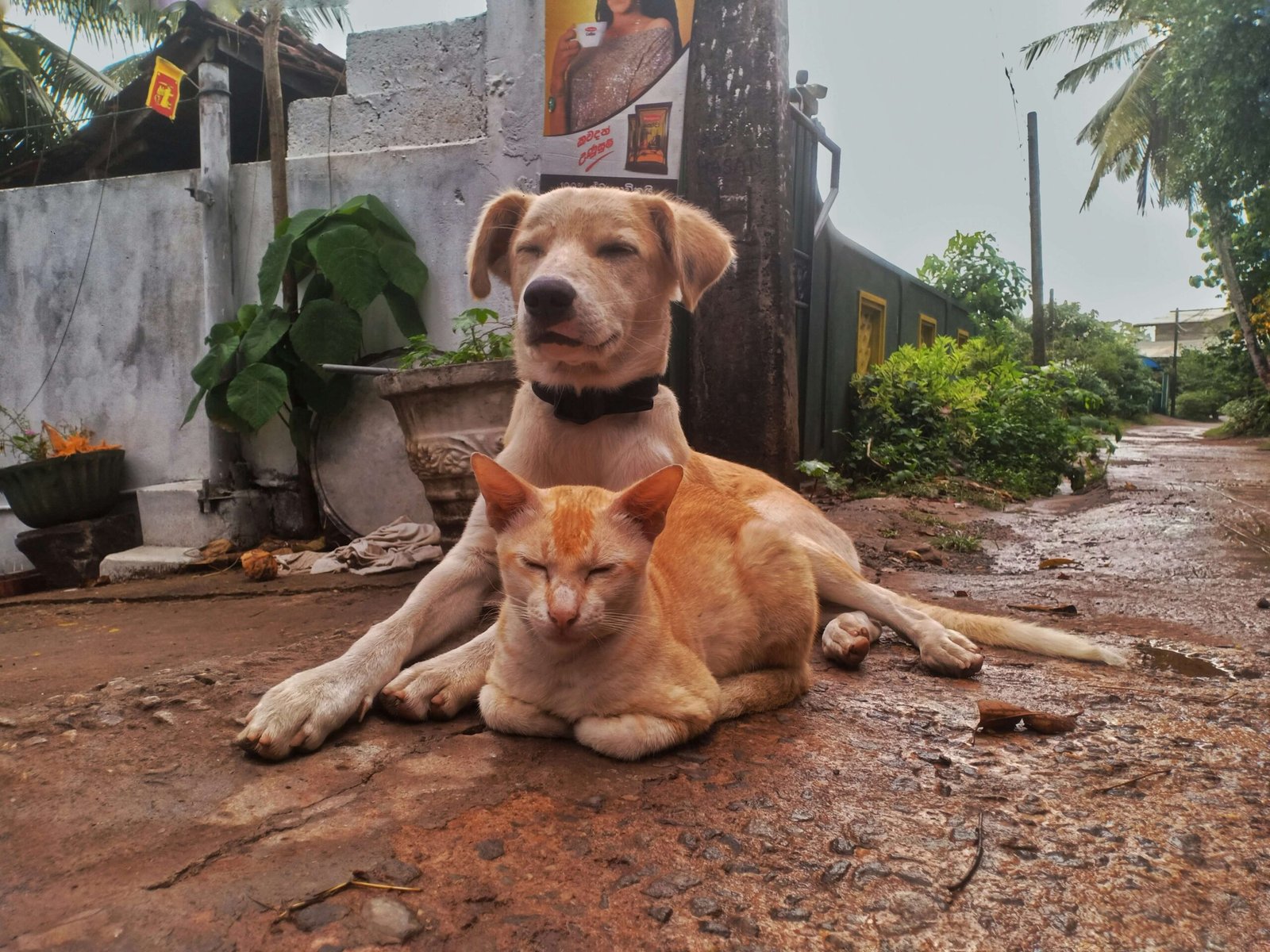Cat and Dog Fighting: Understanding the Dynamics Between Our Furry Friends
When we think of cats and dogs, we often picture them as sworn enemies locked in an eternal battle. Movies, cartoons, and even memes have perpetuated the stereotype of cats and dogs fighting, leaving many pet owners wondering if this rivalry is inevitable. The truth is, while conflicts between these two species can occur, they are not always destined to be at odds. In this blog post, we’ll explore why cat and dog fighting happens, how to prevent it, and ways to foster harmony in a multi-pet household. Whether you’re a first-time pet owner or managing a furry family, understanding their interactions can help create a peaceful environment for everyone.
Why Do Cats and Dogs Fight? Common Triggers Explained
Cat and dog fighting often stems from misunderstandings rather than genuine animosity. These two species communicate differently, and their body language can sometimes send mixed signals. Here are some common reasons why conflicts arise:
Territorial Behavior : Both cats and dogs are territorial animals, and introducing a new pet can lead to defensive reactions.
Miscommunication : A wagging tail in a dog might signal excitement, but to a cat, it could indicate agitation or aggression.
Resource Guarding : Food, toys, or even attention from their human can trigger competition between pets.
Fear or Anxiety : A scared or anxious animal may react defensively, leading to fights or aggressive behavior.
Energy Mismatch : High-energy dogs may accidentally frighten more reserved cats, causing tension.
Understanding these triggers is the first step toward preventing unnecessary conflicts and fostering a harmonious relationship between your pets.
Signs of Cat and Dog Fighting: What to Watch For
Recognizing the early signs of tension between cats and dogs can help you intervene before things escalate into full-blown fights. Keep an eye out for these behavioral cues:
Growling or Hissing : Vocal warnings are a clear sign that one or both animals feel threatened.
Staring Contests : Prolonged eye contact between a cat and dog often indicates a challenge or power struggle.
Raised Fur : A puffed-up tail on a cat or raised hackles on a dog signal heightened alertness or aggression.
Chasing Behavior : While playful chasing can be harmless, persistent pursuit may indicate dominance or bullying.
Body Language Changes : A stiff posture, arched back, or crouching position can signify readiness to attack.
Being observant and proactive can help you de-escalate potential conflicts and ensure a safer environment for both pets.
Check this guide 👉How to Stop Dog Aggression Towards Cats: Best 7 Tips!
Check this guide 👉Can a Cat and a Dog Have a Baby? Best 7 Expert Tips!

Preventing Cat and Dog Fighting | Tips for Harmonious Coexistence |
|---|---|
Gradual Introductions | Allow pets to meet slowly over time |
Separate Resources | Provide separate food bowls and beds |
Positive Reinforcement | Reward calm and friendly behavior |
Supervised Interactions | Monitor playtime to prevent escalation |
Safe Spaces | Create retreat areas for each pet |
How to Stop Cat and Dog Fighting: Effective Strategies
If your cat and dog are already engaging in fights, it’s essential to take immediate action to stop the behavior and prevent future incidents. Here are some proven techniques to help restore peace:
Separate the Pets Temporarily : Use baby gates or closed doors to give both animals time to cool down.
Redirect Aggression : Distract fighting pets with a loud noise or a toy to break their focus.
Avoid Punishment : Scolding or punishing pets during a fight can increase stress and worsen the situation.
Teach Commands : Train your dog to respond to commands like “leave it” or “stay” to manage interactions.
Consult a Professional : If the fighting persists, seek advice from a veterinarian or animal behaviorist.
By addressing the root causes of conflict and using these strategies, you can create a calmer and more harmonious home environment.
Building a Peaceful Relationship Between Cats and Dogs
Creating a lasting bond between your cat and dog takes time, patience, and consistency. Here are some tips to encourage positive interactions and reduce the likelihood of fighting:
Start with Neutral Territory : Introduce pets in a neutral space where neither feels ownership or territoriality.
Use Scent Swapping : Rub a cloth on one pet and let the other sniff it to familiarize them with each other’s scent.
Short, Controlled Meetings : Begin with brief, supervised interactions and gradually increase the duration.
Reward Calm Behavior : Offer treats or praise when both pets remain calm and relaxed around each other.
Respect Individual Personalities : Some cats and dogs may never become best friends, and that’s okay—focus on mutual tolerance.
With consistent effort, you can help your pets develop a respectful and peaceful coexistence.
Understanding Cat and Dog Body Language: Decoding Their Signals
Misinterpreting body language is a common cause of cat and dog fighting. By learning to read their cues, you can prevent misunderstandings and foster better communication between your pets. Here’s what to look for:
Dog’s Play Bow : A lowered front end with a raised rear signals playful intent, not aggression.
Cat’s Tail Position : A puffed-up tail indicates fear or agitation, while a relaxed tail suggests calmness.
Ears and Eyes : Flattened ears or dilated pupils in either species often signal stress or readiness to fight.
Vocalizations : Cats hissing or dogs growling are clear signs of discomfort that should not be ignored.
Body Posture : A stiff, rigid stance in either animal may indicate they feel threatened or defensive.
By paying attention to these subtle signals, you can intervene before tensions escalate and help your pets feel more secure around each other.
Creating a Safe Environment for Cats and Dogs
A safe and structured environment is essential to reducing cat and dog fighting. By making a few adjustments to your home, you can minimize stress and create spaces where both pets feel secure. Consider these tips:
Vertical Space for Cats : Install cat trees or shelves to give your cat a high vantage point away from the dog.
Dog-Free Zones : Use baby gates or closed doors to create areas where your cat can retreat undisturbed.
Separate Food Areas : Feed your pets in different rooms to avoid competition over food.
Comfortable Resting Spots : Provide cozy beds for both pets in separate locations to prevent territorial disputes.
Interactive Toys : Offer toys that engage each pet individually, reducing the likelihood of resource guarding.
A well-designed living space can significantly reduce tension and help your pets coexist more peacefully.
Training Tips to Reduce Cat and Dog Fighting
Training plays a crucial role in preventing conflicts between cats and dogs. Teaching your pets appropriate behaviors can help them interact safely and respectfully. Here are some effective training strategies:
Basic Obedience for Dogs : Teach commands like “sit,” “stay,” and “leave it” to help your dog control their impulses around the cat.
Desensitization Exercises : Gradually expose your pets to each other’s presence in controlled settings to reduce fear or aggression.
Positive Reinforcement : Reward both pets with treats or praise when they exhibit calm behavior during interactions.
Leash Training for Dogs : Keep your dog on a leash during initial meetings to maintain control and prevent chasing.
Calm Energy Encouragement : Model calm behavior yourself, as pets often mirror their owner’s energy and emotions.
With consistent training and patience, you can guide your pets toward a more peaceful relationship and minimize the risk of fighting.
Frequently Asked Questions About Cat and Dog Fighting
Why do cats and dogs fight so much?
Conflicts often arise due to miscommunication, territorial instincts, or resource guarding.
Can cats and dogs ever get along?
Yes, with proper introductions and training, many cats and dogs can coexist peacefully.
What should I do if my pets fight?
Separate them immediately, avoid punishment, and consult a professional if needed.
How long does it take for cats and dogs to adjust to each other?
Adjustment times vary but typically range from a few weeks to several months.
Is it normal for them to chase each other?
Occasional chasing can be playful, but persistent chasing may indicate dominance issues.
Finding Harmony in a Multi-Pet Household
While cat and dog fighting can be stressful, it’s important to remember that peace is achievable with patience and understanding. By addressing the root causes of conflict, providing safe spaces, and fostering positive interactions, you can create a harmonious environment where both pets thrive. Every cat and dog has a unique personality, and finding the right balance may take time, but the rewards of a peaceful household are well worth the effort. Remember, your love and guidance are key to helping your furry companions overcome their differences and live together in harmony.
Cat Fever Treatment: Best 7 Expert Tips! Discover expert advice on identifying, managing, and treating fever in cats to ensure their quick recovery and well-being.
Understanding Meloxicam for Cats: Best 7 Expert Tips! Learn how to safely administer meloxicam, manage side effects, and ensure your cat's comfort with expert advice on feline pain relief.
Amoxicillin for Cat UTI: Best 7 Expert Tips! Discover safe usage, dosage guidelines, and expert advice on treating feline urinary tract infections effectively with amoxicillin.
Understanding Cat Cancer Treatment: Best 7 Expert Tips! Discover expert advice on managing feline cancer, from early detection to treatment options, ensuring your cat’s health and comfort.





